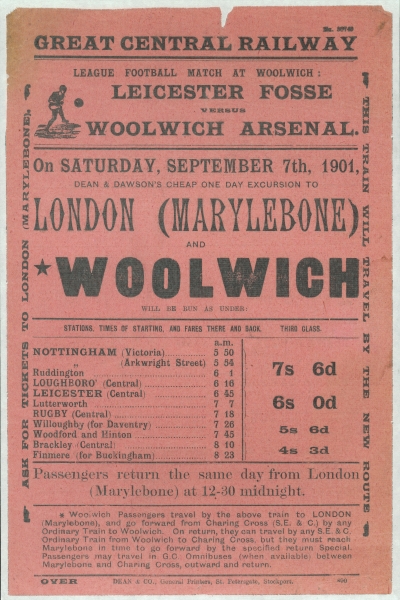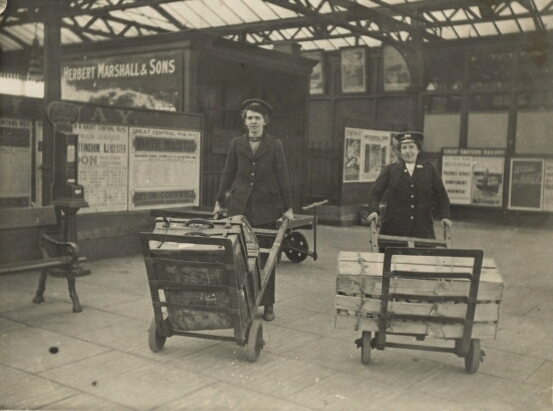The first decade of the London Extension's life was a very testing time for the Great Central Railway Company and for the staff at Leicester Central. For it was during this period that the railway had to prove itself and try and win custom from its nearest rivals. In the case of Leicester Central, it had to fend off the competition from the Midland Railway's London Road station and the Great Northern Railway at Belgrave Road. To achieve this, the Great Central produced brightly coloured timetables and posters to tempt people onto its trains and also employed a company called Dean & Dawson to act as the railway's official travel agents. These set up a wide variety of excursions from Leicester, including trips to football matches or to sample the seaside delights of Cleethorpes.
Hand bill advertising a football match excursion to London See Details
1914 saw Britain go to war in Europe, the result of which was the conscription of many of the country's young men into the armed forces. These men came from all walks of life and their departure left an enormous shortfall in the industrial workforce. This was particularly felt on the railways where men staffed the majority of the jobs. To fill this gap, the factories, railways, buses and trams employed women to take the place of the men for the duration of the conflict. Many women signed up for these jobs, and most were sorry to have to give them up when the men came home. The Great Central was no exception, with women taking the roles of guards, porters and locomotive cleaners.
Women porters at Leicester Central Station See Details
After the Armistice in 1918, the Great Central settled down into a period of uneventful operation. Life at Leicester Central carried on much as it had before the war, and some of the women stayed on until men could be appointed to fill their posts. What many of these humble station staff would not have realised was that government plans were in motion that would radically change the railways they knew. For in 1923, the nation's 123 individual railway companies would be amalgamated to form four large operating companies. The Great Central Railway officially ceased to be at the end of December 1922 and the new London & North Eastern Railway (LNER) took control of the London Extension and most of the railways along Britain's east coast between London and Scotland.
Once the LNER had taken control of the London Extension in 1923, it did not take long before the old Great Central Railway name was replaced by the new identity. This sign was put up outside Leicester Central, and was still in place during October 1957 when this image was taken. See Details










